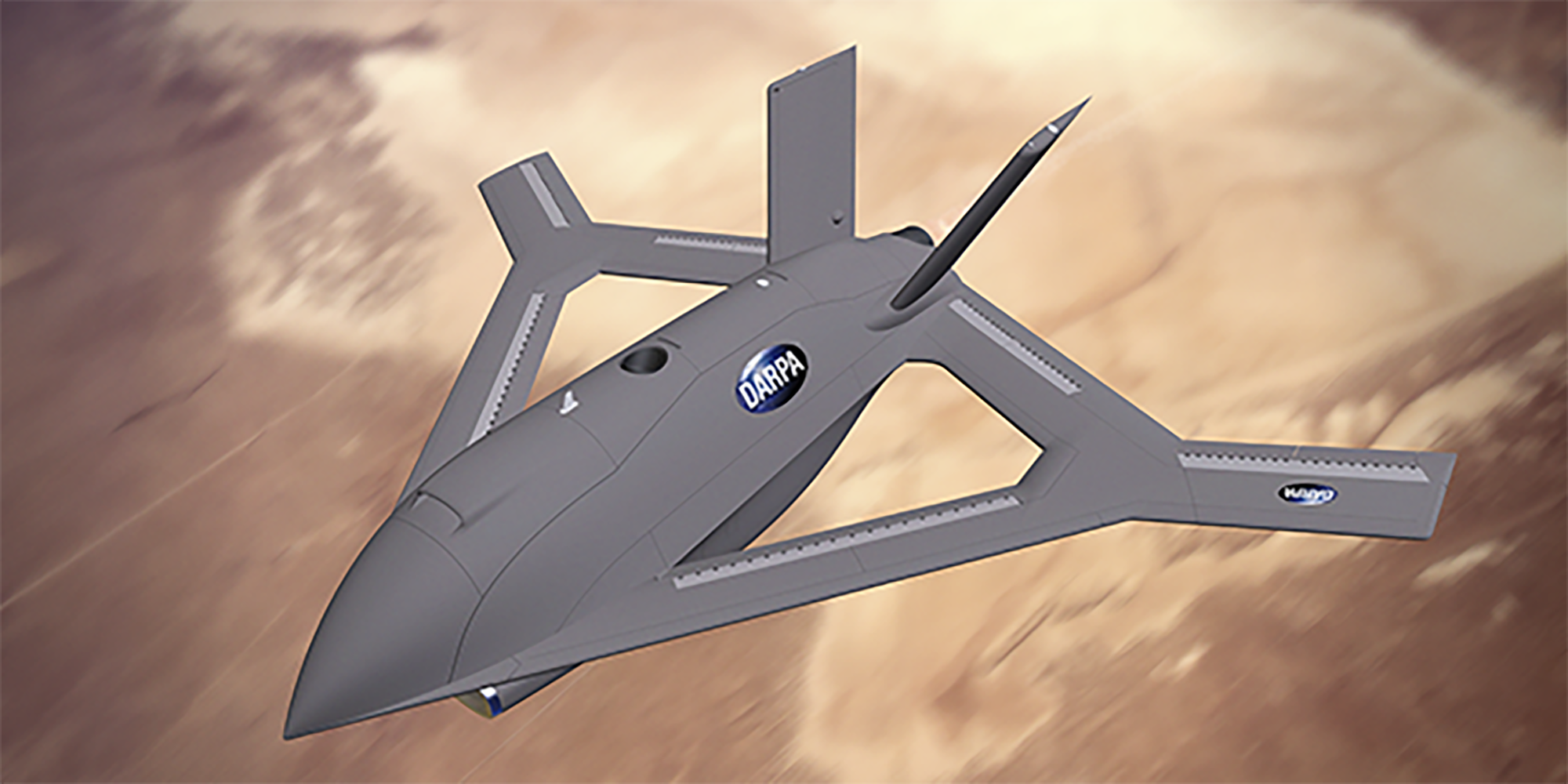
Sign up for daily news updates from CleanTechnica on email. Or follow us on Google News!
Normally, electric aviation is the last thing we consider when talking about military aircraft. Militaries around the world use a LOT of fossil fuels, and this is particularly bad for aviation. The power density just isn’t there for most types of planes to be able to effectively use battery power, and the higher performance planes militaries often need are even less favorable to that. Things like fighter jets use tens of thousands of gallons of fuel, just to carry a pilot and some bombs and missiles around.
But, that doesn’t mean that the United States is just planning on using today’s technology forever. If the government did that, it would result in massive losses down the road if other powers kept pursuing technology. That’s why the famous X-Planes programs continue to find novel ways of doing things. Future technologies that will change everything (along with technologies that won’t) are in testing today. One of them is the X-65 CRANE, which stands for Control of Revolutionary Aircraft with Novel Effectors.
Something tells me that they picked the name to get a cool acronym, but the reality of what they’re doing really is revolutionary. Instead of having moving control surfaces to change the direction of an aircraft as it flies, CRANE aims to move air in different ways.
[embedded content]
Things like rudders, elevators, and ailerons are essential to flight today, but they have some drawbacks, like energy needed for hydraulic systems or the extra aerodynamic drag from seams and joints.
To get around needing those, DARPA is using things like air nozzles and jet ducting to instead shoot puffs of air out at key locations. In the video, it shows how the little RC plane has special nozzles at the back, which are fed from the little plane’s tiny jet engines. When the team closes the little plane back up, it’s able to steer using these nozzles instead of moving parts of the wings. Like many new designs, it doesn’t even have a tail.
Other upcoming designs are even more radical. Instead of using little puffs of air to steer, some future planes might have surfaces that change electrical charge, temperature, or texture to change the flow of air across them. If done efficiently, this could be even more efficient.
Militaries are mainly interested in these technologies today because they’d help reduce the radar return, meaning the planes would be even more stealthy. Seams, changes in shape, and the way the controls have to work means that advanced radars can still pick them up in some situations. But, a solid state plane that doesn’t have to change its shape to control itself ends up being able to always to always be in its best shape for stealth.
Speed is another thing that would greatly benefit from planes without control surfaces. When they’re trying to push planes to Mach 10 like the Darkstar prototype in Top Gun: Maverick (a plane which is probably real), seams and moving surfaces can be disastrous. So, these novel technologies that push efficiency to the limits can also be used to get more performance.
The relationship between performance and efficiency is well-known in every form of transportation. When people think of older muscle cars, they seem like they guzzled gas but also produced a lot of power, but common four-cylinder turbo engines in sedans and crossovers are often not only more powerful, but do it with a lot less fuel. So, the military’s push for better technology may not be aimed at efficiency, but ends up contributing to it regardless.
The biggest thing non-moving control surfaces can help with is weight. Without hydraulic pumps, lines, fluids, and the moving surfaces themselves, weight for things like batteries is preserved. Even without going electric, less weight means less fuel consumption, which is still great for both the environment and an aircraft’s owner’s pocketbook.
The energy needed to run these systems (pumps and motors) and their backups can also be saved, which increases an aircraft’s range. Once again, ICE aircraft are helped by this, but EV aircraft in the future will benefit, too.
Another big benefit is fewer moving parts. This doesn’t directly affect the ability to build an electric or efficient ICE aircraft, but it contributes to the environmental friendliness and lowering of costs. Having to maintain more complex systems means more time spent, more people driving around, and more parts having to be made in factories. This all means emissions, right?
It’s Not Ideal, But It Gets The Money Into Research
I know some of the more pacifist readers are probably rolling their eyes. I may even be accused of advertising for Lockheed Martin and Raytheon for writing about military technologies. But, we have to remember that despite the very real downsides to defense spending and the even bigger downsides of warfare and the military industrial complex that feeds it, that a lot of technology we take for granted today on the environmental side got their funding from defense budgets at some point.
The internet you just used to load this page is a great example. DARPA wanted to build a computer network that couldn’t be decapitated by a Soviet strike, and pioneered ideas like a decentralized national network. This grew into today’s internet, which not only outlived the Soviet Union, but now connects us with Russia.
People today love and rely on things like sunglasses, medical monitors, and insulin pumps. Those things were developed as part of a seemingly wasteful space race during the Cold War. Nobody in the 1950s and 1960s would have spent big bucks to develop those technologies, but when the future of freedom was on the line, and the government opened access to its seemingly bottomless pockets, we got those technologies.
Non-moving control surfaces are an expensive technology to prove out, and we don’t see entities like United or Southwest putting money into developing them, even if big future benefits could be realized. Shareholders want the next quarter to look good, and don’t want the company spending billions on fundamental research. So, defense spending ends up being about the only way to get the job done without certain members of Congress crying “Socialism!”.
Featured image by DARPA (Public Domain). The appearance of U.S. Department of Defense (DoD) visual information does not imply or constitute DoD endorsement.
Have a tip for CleanTechnica? Want to advertise? Want to suggest a guest for our CleanTech Talk podcast? Contact us here.
Our Latest EVObsession Video
[embedded content]
I don’t like paywalls. You don’t like paywalls. Who likes paywalls? Here at CleanTechnica, we implemented a limited paywall for a while, but it always felt wrong — and it was always tough to decide what we should put behind there. In theory, your most exclusive and best content goes behind a paywall. But then fewer people read it!! So, we’ve decided to completely nix paywalls here at CleanTechnica. But…
Thank you!
Advertisement
CleanTechnica uses affiliate links. See our policy here.
- SEO Powered Content & PR Distribution. Get Amplified Today.
- PlatoData.Network Vertical Generative Ai. Empower Yourself. Access Here.
- PlatoAiStream. Web3 Intelligence. Knowledge Amplified. Access Here.
- PlatoESG. Carbon, CleanTech, Energy, Environment, Solar, Waste Management. Access Here.
- PlatoHealth. Biotech and Clinical Trials Intelligence. Access Here.
- Source: https://cleantechnica.com/2023/12/30/a-key-electric-aviation-technology-started-testing-in-2023/
- :has
- :is
- :not
- $UP
- 10
- 15%
- 2023
- 36
- a
- ability
- Able
- About
- access
- accused
- across
- advanced
- Advertise
- Advertising
- affect
- Affiliate
- again
- aimed
- aims
- AIR
- aircraft
- All
- along
- also
- always
- an
- and
- Another
- ARE
- around
- AS
- At
- aviation
- back
- backups
- Bad
- batteries
- battery
- BE
- because
- behind
- being
- benefit
- benefits
- BEST
- Better
- between
- Big
- bigger
- Biggest
- billions
- Bit
- both
- Budgets
- build
- but
- by
- CAN
- carry
- cars
- certain
- change
- Changes
- charge
- chip
- cleantech
- Cleantech Talk
- Closes
- cold
- Common
- Companies
- company
- completely
- complex
- computer
- Congress
- connects
- Consider
- constitute
- consumption
- content
- continue
- contributes
- contributing
- control
- controls
- Cool
- Costs
- could
- Crying
- darpa
- decentralized
- decide
- decided
- Defense
- density
- Department
- department of defense
- designs
- Despite
- develop
- developed
- developing
- DID
- different
- direction
- directly
- disastrous
- do
- DoD
- does
- Doesn’t
- doing
- domain
- don
- done
- Dont
- down
- downsides
- drawbacks
- driving
- during
- effectively
- efficiency
- efficient
- efficiently
- Electric
- embedded
- Emissions
- Endorsement..
- ends
- energy
- Engines
- entities
- Environment
- environmental
- essential
- EV
- Even
- Every
- everything
- example
- Exclusive
- expensive
- extra
- Eyes
- factories
- famous
- favorable
- Fed
- felt
- fewer
- Find
- flight
- flow
- For
- forever
- form
- fossil
- fossil fuels
- Freedom
- friendliness
- from
- Fuel
- fuels
- fundamental
- funding
- future
- GAS
- get
- Goes
- going
- good
- got
- Government
- granted
- great
- greatly
- grew
- Guest
- Have
- having
- help
- helped
- here
- higher
- How
- HTTPS
- i
- ICE
- ideal
- ideas
- if
- image
- implemented
- in
- Increases
- industrial
- information
- instead
- interested
- Internet
- into
- IT
- ITS
- itself
- Jets
- Job
- just
- kept
- Key
- Know
- Last
- latest
- less
- like
- likes
- Limited
- limits
- Line
- lines
- links
- little
- load
- locations
- Lockheed Martin
- Look
- losses
- Lot
- love
- lowering
- made
- mainly
- maintain
- many
- Martin
- massive
- maverick
- May..
- me
- mean
- meaning
- means
- Media
- medical
- Members
- might
- militaries
- Military
- missiles
- Modern
- money
- monitors
- more
- more efficient
- most
- Motors
- move
- moving
- muscle
- name
- National
- Need
- needed
- needing
- network
- New
- news
- next
- novel
- now
- of
- often
- older
- on
- once
- ONE
- only
- opened
- or
- Other
- our
- out
- page
- part
- particularly
- parts
- People
- performance
- pick
- picked
- pilot
- pioneered
- plane
- Planes
- planning
- plato
- Plato Data Intelligence
- PlatoData
- player
- pockets
- podcast
- Point
- policy
- power
- powerful
- powers
- preserved
- probably
- Produced
- Programs
- prototype
- Prove
- public
- publish
- Puffs
- pumps
- pursuing
- Push
- put
- Putting
- Quarter
- Race
- radar
- radical
- range
- Read
- Reader
- readers
- real
- Reality
- realized
- really
- reduce
- Regardless
- relationship
- rely
- remember
- research
- result
- return
- revolutionary
- right
- road
- Rolling
- Run
- Russia
- s
- saved
- sedans
- see
- seem
- seemingly
- Shape
- Shareholders
- Shoot
- should
- Shows
- side
- situations
- So
- solid
- some
- soviet
- Space
- space race
- special
- Spending
- spent
- stands
- started
- State
- States
- Stealth
- stealthy
- steer
- Still
- Stories
- strike
- suggest
- support
- Systems
- T
- Take
- Talk
- talking
- team
- Technologies
- Technology
- tells
- tens
- Testing
- that
- The
- The Future
- the world
- their
- Them
- themselves
- then
- theory
- There.
- These
- they
- thing
- things
- Think
- this
- those
- thousands
- time
- tip
- to
- today
- today’s
- too
- top
- tough
- transportation
- trying
- types
- u.s.
- U.S. Department of Defense
- union
- United
- United States
- upcoming
- Updates
- us
- use
- used
- uses
- using
- Ve
- very
- Video
- visual
- want
- wanted
- war
- was
- Way..
- ways
- we
- weight
- well-known
- were
- What
- when
- which
- while
- WHO
- why
- will
- with
- without
- Work
- world
- would
- write
- writing
- Wrong
- you
- Your
- youtube
- zephyrnet








